Name Christopher Hatton Role Politician | ||
 | ||
Similar People Elizabeth I of England, Laurence Fox, Shekhar Kapur, Harold Macmillan, Robert Douglas | ||
Christopher hatton the rake of sterling
Sir Christopher Hatton KG (1540 – 20 November 1591) was an English politician, Lord Chancellor of England and a favourite of Elizabeth I of England.
Contents
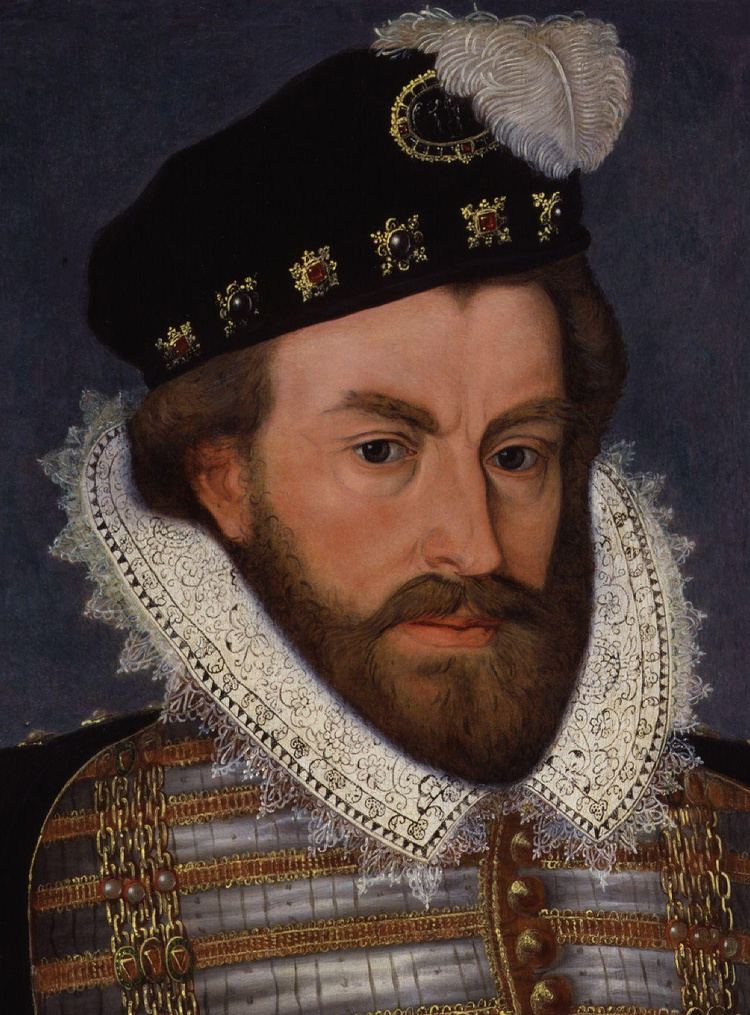
Early years
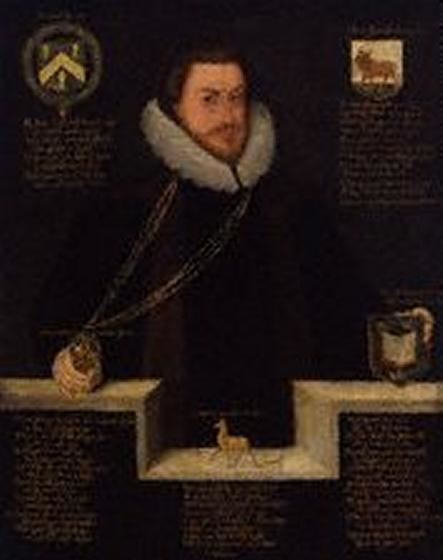
Sir Christopher Hatton was the second son of William Hatton (died 28 August 1546) of Holdenby, Northamptonshire, and his second wife, Alice Saunders, the daughter of Lawrence Saunders (died 1544) of Harrington, Northamptonshire, and his wife, Alice Brokesby, the daughter of Robert Brokesby (died 28 March 1531) of Shoby, Leicestershire, and Alice Shirley.
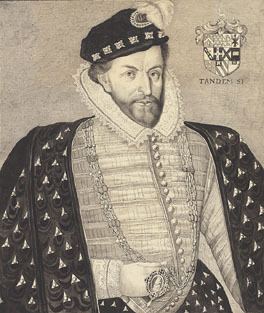
Sir Christopher Hatton's early education is said to have been supervised by his maternal uncle, William Saunders (died c. 1583), but otherwise nothing is known of his life until he entered St. Mary's Hall, Oxford as a gentleman commoner at 15 or 16 years of age. Hatton left Oxford without taking a degree, and enrolled in the Inner Temple on 26 May 1560. No evidence exists as to whether he was called to the bar.

In 1561 he played the part of Master of the Game at a masque at the Inner Temple, and it was on a similar occasion that he first attracted the attention of Queen Elizabeth. Handsome and accomplished, and reputedly an excellent dancer, he came to court, according to Naunton, "by the galliard, for he came thither as a private gentleman of the Inns of Court in a masque, and for his activity and person, which was tall and proportionable, taken into the Queen's favour". In 1564 he became one of the Queen's gentlemen pensioners and a gentleman of the privy chamber, and in July 1572 was appointed captain of the yeomen of the guard. On 11 November 1577 he was appointed vice-chamberlain of the royal household and sworn of the Privy Council, and in the same month was knighted. In June 1578 the Queen formally granted him the Bishop of Ely's house in Ely Place, Holborn, despite the vigorous protests of the Bishop. These appointments, together with the valuable grants with which the Queen showered him during these early years, prompted rumours that he was her lover, a charge specifically made in 1584 by Mary, Queen of Scots. There was undoubtedly a close personal relationship between them. In correspondence, the Queen called him her "Lyddes", and he is said to have referred to himself in at least one letter as her "sheep". However, Hatton "was probably innocent in this matter."
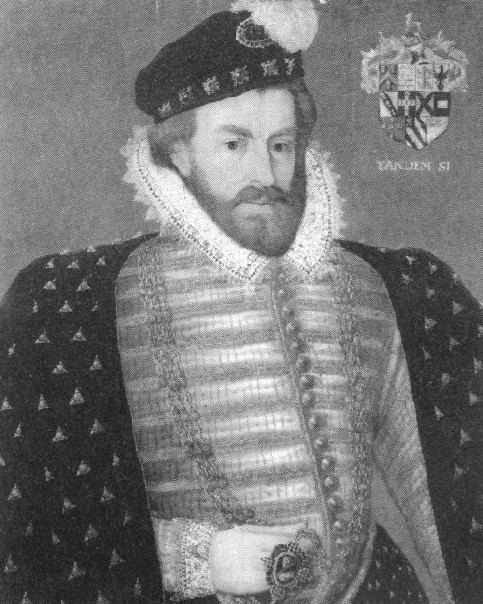
Hatton represented Higham Ferrers in Parliament in 1571, and from May 1572 onwards was a member for Northamptonshire. He was an active agent in Parliament in the prosecutions of John Stubbs and William Parry. He was also one of those appointed to arrange a marriage between the Queen and Francois, Duke of Alençon, in 1581, although he urged the Queen not to marry Alençon.
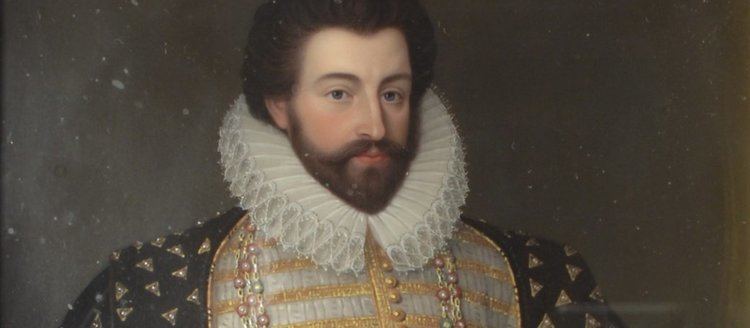
According to one account Hatton had at one time assured Mary, Queen of Scots that he would fetch her to London if Queen Elizabeth died. Whatever the truth of this story, Hatton's loyalty to his sovereign appears to have been unquestioned, and on one memorable occasion in December 1584 he led 400 kneeling members of the House of Commons in a prayer for the Queen's safety.
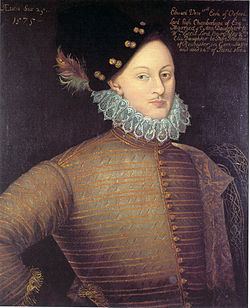
Hatton was a member of the court which tried Anthony Babington in 1586, and was one of the commissioners who found Mary, Queen of Scots, guilty of treason in the following year. He vigorously denounced the Queen of Scots in Parliament, and advised William Davison to forward the warrant for her execution to Fotheringhay.
In 1587 Hatton was made Lord Chancellor. Though he had no great knowledge of the law, he appears to have acted with sound sense and good judgement in his new position. He is said to have been a Roman Catholic in all but name, yet he treated religious questions in a moderate and tolerant way.
Hatton was a Knight of the Garter and chancellor of the University of Oxford. He is reported to have been very parsimonious, but he patronized men of letters, and among his friends was Edmund Spenser. He wrote the fourth act of a tragedy, Tancred and Gismund, and his death occasioned several panegyrics in both prose and verse.
Although he seems to have had an illegitimate daughter, Hatton never married, and his large and valuable estates descended to his nephew, Sir William Newport (1560–1597), who took the surname Hatton. When Sir William Hatton died without male issue in 1597, the estates passed to a kinsman, another Sir Christopher Hatton (died 1619), whose son and successor, Christopher, was created Baron Hatton of Kirby.
Wealth
Hatton became very wealthy as a result of his progressing career and the Queen's fondness for him, so much so that in 1583 he embarked on the construction of a magnificent house in Holdenby, Northamptonshire. It was, at the time, the largest privately owned Elizabethan house in England. It contained 123 huge glass windows, in the days when glass was very expensive (indeed, a good show of wealth was how many windows you could afford in your house). It had two great courts and was as large as the palace of Hampton Court. It was three storeys high and had two large state rooms, one for himself and another for the queen should she ever come and stay, which she never did.
Lord Burghley, who visited the house in his old age, was immensely impressed with the grand staircase leading from the hall to the state rooms and proclaimed the house so faultless that he forgot the "infirmity of his legs" whilst he walked around. No expense was spared, and Hatton even paid to move an entire small village because it spoiled the view from one of his windows. The cost of the house drained his purse to such an extent that Hatton was permanently short of money for the rest of his life. No stranger to the financial strain of building, Burghley had written to Hatton "God send us both long to enjoy her, for whom we both meant to exceed our purses in these."
To maintain his dwindling wealth, Hatton began investing in some of the voyages of Francis Drake. He helped fund Drake's acts of piracy in Spanish America. During Drake's subsequent circumnavigation of the globe, when he reached the straits of Magellan, he renamed his ship The Golden Hind in honour of Hatton's coat of arms, which contained a golden hind, and of and all the Spanish gold on board. Hatton made a profit of £2300 from this particular expedition.
Death
Despite his successes, he died with large debts, only a few years after his house at Holdenby was finally completed. All that remains of the original Holdenby House are old drawings and plans, one room which was later incorporated into a new restoration in the 1870s, part of the pillared doorway and 2 arches with the date 1583 inscribed upon them, which now stand alone in the gardens.
Hatton's health declined in 1591. The Queen visited him on 11 November, and on 20 November he died at Ely Place, and was given a state funeral at Old St Paul's Cathedral on 16 December. A magnificent monument to him stood at the high altar of Old St Paul's, "towering above it – an outrage to the susceptibilities of the devout but an object of marvel to London sightseers – until the Great Fire of 1666 dethroned and destroyed it." Hatton is listed on a modern monument in the crypt as one of the important graves lost.
Hatton Garden in central London, a major centre of the diamond trade, is named after him.
In 1983, a school, Sir Christopher Hatton School named after him was opened in Wellingborough, Northamptonshire.
